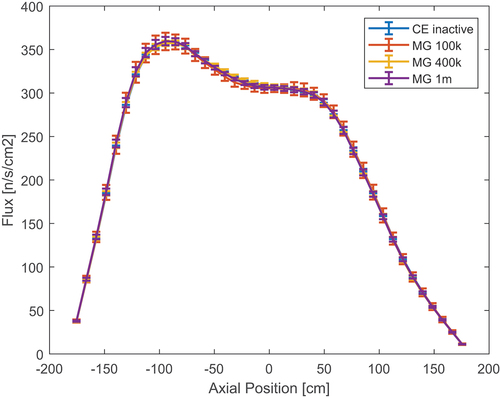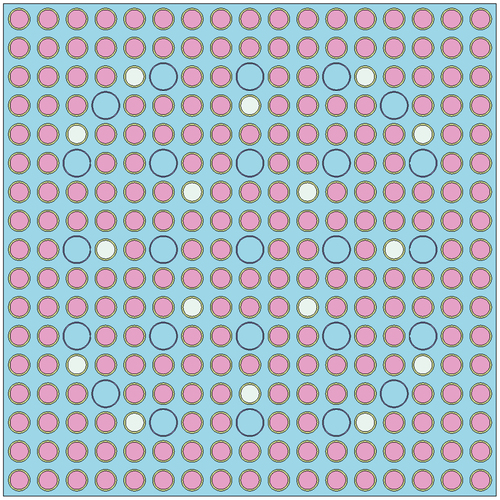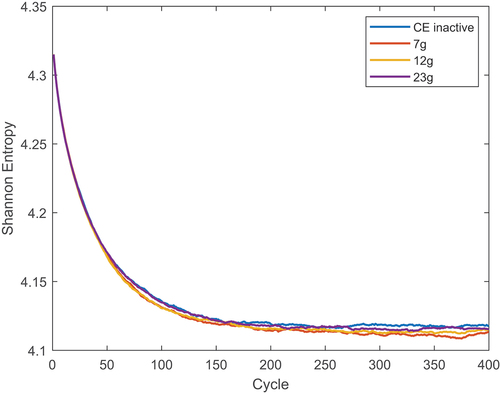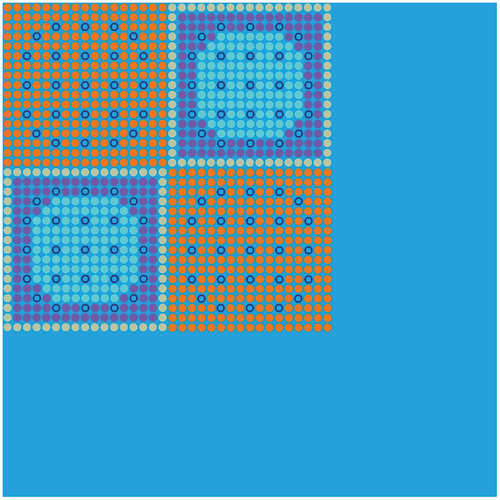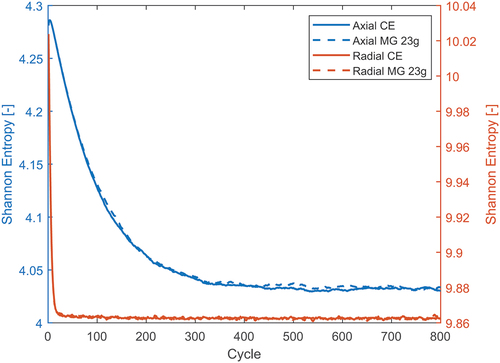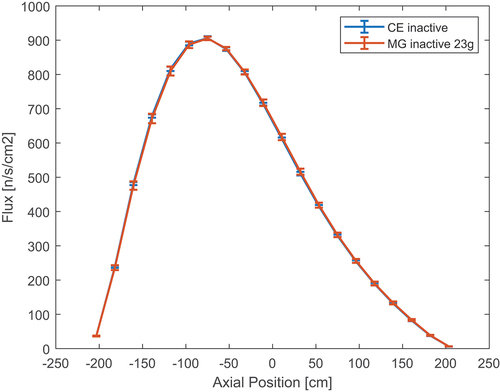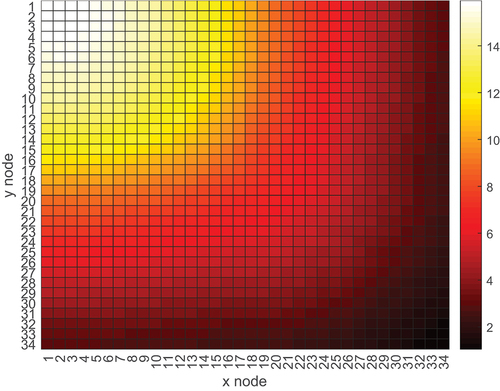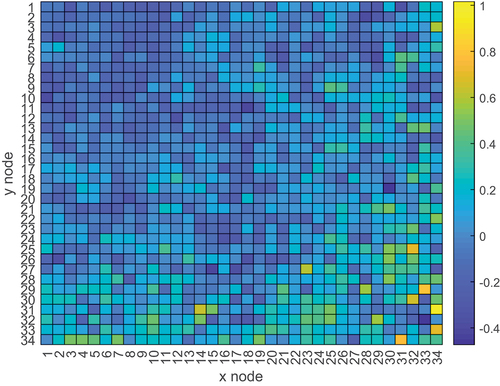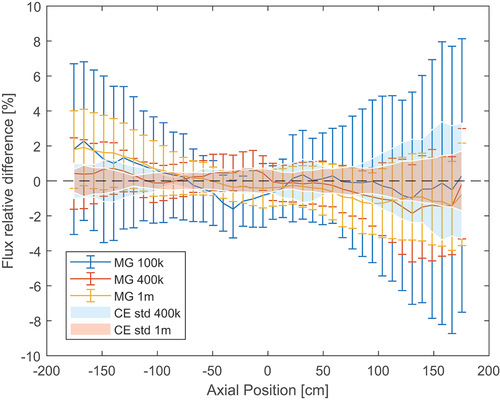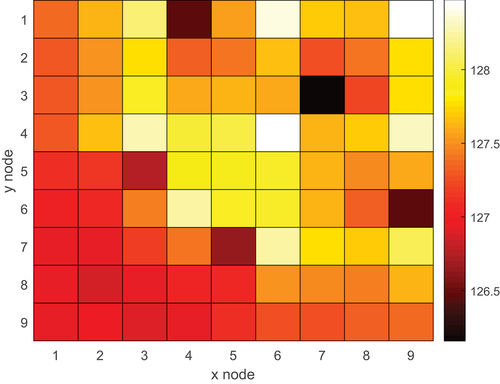Figures & data
TABLE I Density Profile of Water Coolant Where Node 1 Corresponds to the Top of the Assembly
Fig. 3. Axial Shannon entropy for different group structures as a function of run time in the PWR assembly.
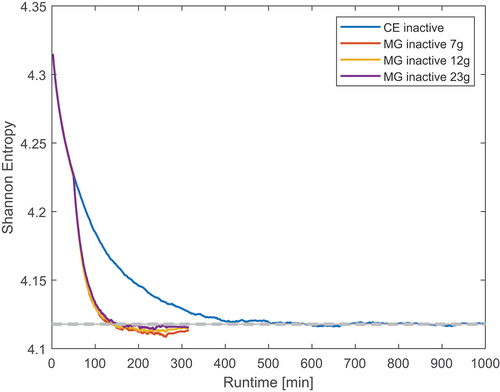
TABLE II Cross-Section Uncertainties (in %) for the PWR Assembly Materials
Fig. 4. Relative difference between MG and reference Shannon entropy when varying the number of cross-section generation cycles in the PWR assembly.
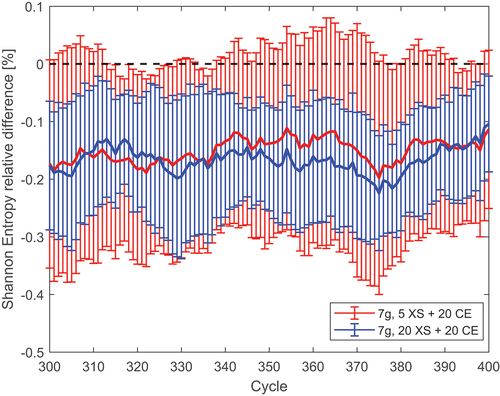
Fig. 5. Relative difference between MG and reference Shannon entropy when varying the group structure in the PWR assembly.
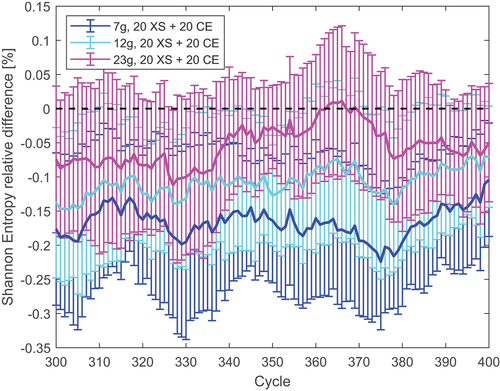
Fig. 7. Relative difference between MG and reference axial flux when varying the group structure in the PWR assembly.
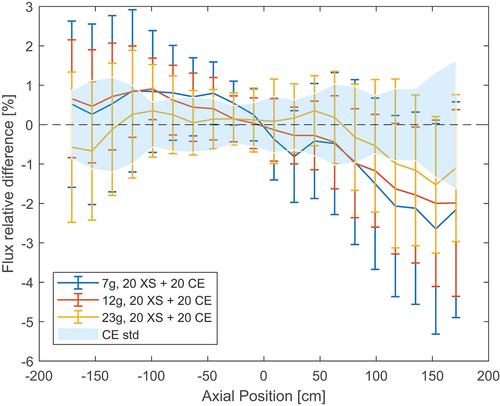
Fig. 8. Relative difference between MG and reference axial flux when using different cross-section generation and final CE cycle combinations in the PWR assembly.
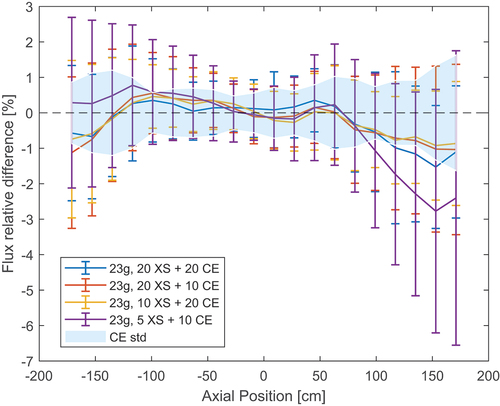
TABLE III Atomic Densities of the C5G7 Fuel Materials*
Fig. 11. Axial and radial Shannon entropy for different group structures as a function of run time in C5G7.
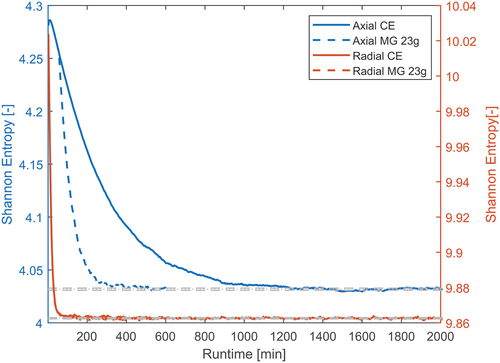
TABLE IV Cross-Section Uncertainties (in %) for the C5G7 23-Group Case
Fig. 13. Relative difference between MG and reference axial flux when using a different number of final CE cycles in C5G7.
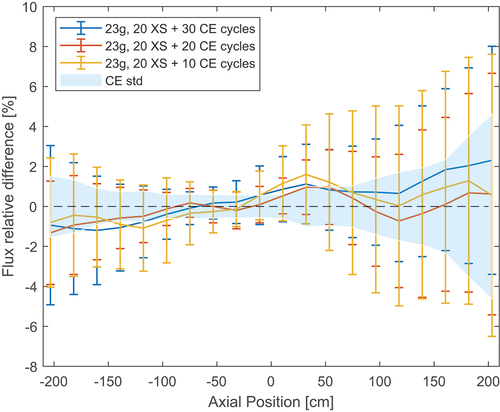
Fig. 17. Relative difference between MG and reference axial flux when using different group structures in the burnt PWR assembly.
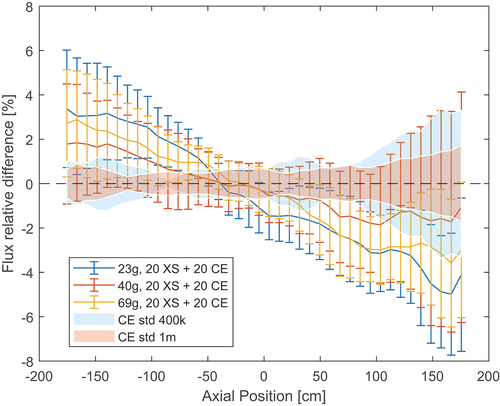
Fig. 18. Relative difference between MG and reference axial flux when using different neutron populations in the burnt PWR assembly.
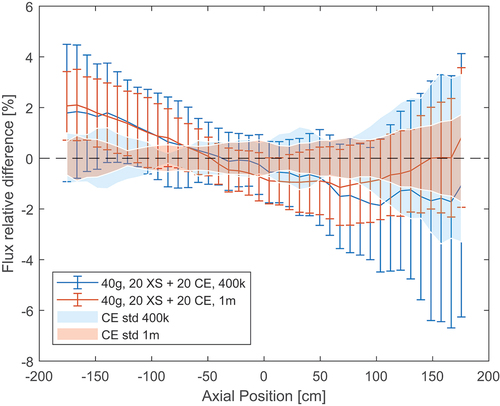
TABLE V Cross-Section Uncertainties (in %) for the Burnt PWR Assembly Materials
Fig. 19. Axial Shannon entropy for different neutron populations in the burnt PWR assembly with material grouping.

Fig. 20. Radial Shannon entropy for different neutron populations in the burnt PWR assembly with material grouping.
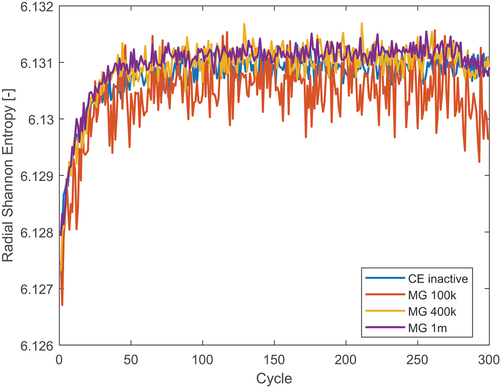
Fig. 21. Axial Shannon entropy as a function of run time for the 400 000-neutrons/cycle case in the burnt PWR assembly with material grouping.
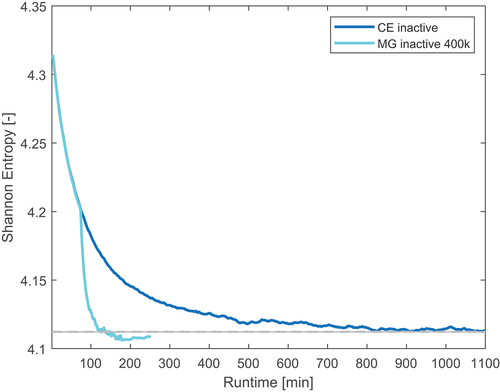
Fig. 22. Axial flux profile produced by different neutron populations in the burnt PWR assembly with material grouping.
